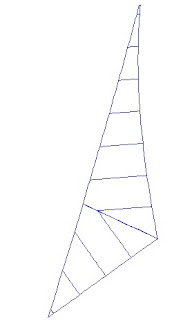Making a Caravel Sail

A few years back we began to hear of a ship being built down Warrnambool way inspired by the famous mysterious "Mahogany Ship". It turned out to be an authentic Caravel crafted by Graeme and Felicite Wylie. Having a strong and passionate interest in maritime history fuelled by family The sail took up our entire small loft association I was v...




